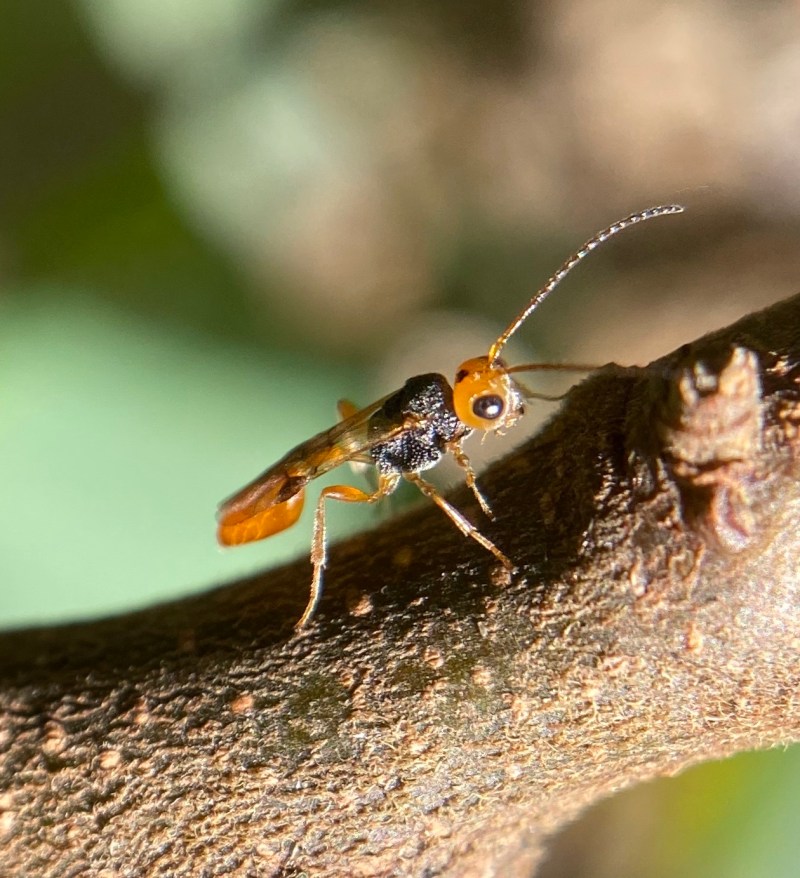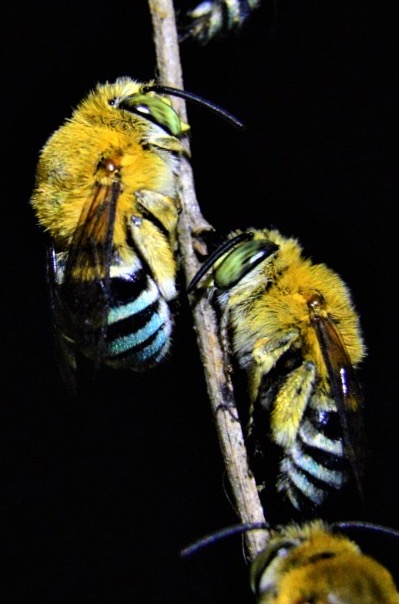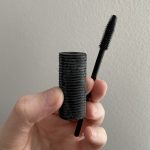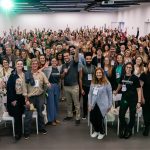What happens when a taxonomist, an ecologist and a mathematician go into lockdown together? They find out something that surprises biodiversity specialists across the globe.
When the Australian state of Queensland went into COVID-19 lockdown in March 2020, housemates Russell Yong, Andrew Rogers and Matthew Holden gave themselves a mission to help pass the time: to see how many different species they could find in their urban rental.
“It was a bit of fun that got out of hand very quickly!” says Yong, the taxonomist, who is now a postdoctoral fellow at North-West University in South Africa.
“It was the first day [of lockdown], and we were thinking, ‘what do we do with ourselves?’
“Then Andrew [Rogers, a wildlife ecologist at the University of Queensland], started cleaning his room, and he came out and said, “I have a lot of spiders in here. I wonder how many different kind of spiders I have.”
That got the housemates wondering just how many species they had in total.
“We estimated maybe a couple of hundred, and we started to count them,” says Yong. “And then it just kept going and going, like all the best scientific experiments: they just blow out on you!”
First, they established some ground rules. Each species had to be visible, and recognizable as an organism, to the naked eye.
They would then take pictures, observe the species under a microscope if necessary, and identify it using dichotomous keys and field guides, as well as through photographs uploaded to Facebook naturalist groups or iNaturalist.
Lastly, they recorded each new species in a shared spreadsheet and tasked themselves with finishing the study within a year.
Then, the mission was on.
“We started going around the garden, beating bushes, poking around the garden beds and inspecting the lights after dark – we’d leave our veranda light on to see what would come to it,” says Yong.
“We found a lot of stuff inside the house as well. It wasn’t that we were living in filth, just that there were no barriers to the outside, so things would come in and take up residence in the kitchen cabinets or wherever.”
“We found over 200 species within a week,” says Holden, a senior lecturer in applied mathematics at the University of Queensland.
“And then we were like, ‘surely we wouldn’t get over 500’. And then: ‘oh, surely we wouldn’t get over 700’. ‘Oh, surely we wouldn’t get over 1000’. But we did.”
By March 2021, they’d identified 1168 species. They moved out of the house a few months later, but Yong says that “frankly, if we were still there today, we’d probably still be finding new things.”

There was nothing particularly unusual about the house or garden. “It’s a very standard, unremarkable inner-suburban house that sits on about 400-odd square meters of land,” said Yong.
“No one really tended the garden to a super manicured degree, so there was a chicken run that went wild, lots of grasses, some attempts to grow fruit trees, a few flowering plants, a lot of weed species, and two large native flowering trees, which brought in a lot of pollinators – birds by day and bats by night.”
Yong says the housemates’ decision to let the garden grow relatively wild, and avoid the use of pesticides and herbicides, likely contributed to the large number of species they found.
“The more [species] richness we had in plants, the more corresponding richness we had with animals,” he says.
Yong also notes that planting native species, rather than simply letting exotic weeds grow, could generate even higher levels of species richness alongside other biodiversity benefits.
The scientists even found three species that had not been recorded in the Atlas of Living Australia at all.
“What was weird about that was that they’re not rare species,” says Yong. “Some of these things we knew were around already – it’s just that no one has done any proper sensing of them.”
“It just shows, even though we have lots of records, how few we actually really have relative to the number of species that are out there,” says Holden.
“If we can find three more just in this little experiment, imagine how many organisms are missing from our national biodiversity database.”
More unusual finds included a velvet worm (Onychophora) – a very evolutionarily primitive creature normally associated with mountain rainforests – and a moth, Parilyrgis concolor, that lays its eggs in spiderwebs so its caterpillars can feed on the food waste that the spiders accumulate in their webs.
“The moth adults would hang like bats by their feet from the silk of the spider webs,” says Yong. “That was probably one of the coolest things we found.”
Holden’s personal favorite was a gangly creature called the thread-legged assassin bug (Empicoris).
“It’s really amazing. It will go to a spider web and pluck it with these two really long, thin appendages, and the spider will think ‘oh, I’ve caught something’ and go towards that area, and then realize that it did not catch a meal: it is, indeed, the meal.”
While the study is long over, Yong still can’t shake the habit of looking out for new creatures.
“I’ve basically become, well, chronic – every time I stop by my office lights after dark, I always check compulsively: are there any moths or anything? I can’t help myself.”
Beyond the clear message the study sends about the significance of urban biodiversity, he says there can be considerable personal benefits to getting involved in citizen science projects like this.
“It would be great if everyone did this. I think it’s so easy to get swept up in the spirit of it – just by downloading an app and creating a profile, and then taking pictures of everything you have in your yard.
“And then, you quickly get hooked on this idea that ‘there’s so much here that I didn’t see before’. That very quickly leads to asking the question of: ‘what habits can I incorporate that would increase that?’
“When you start to care, you immediately begin to think: how do I make this better?’”




